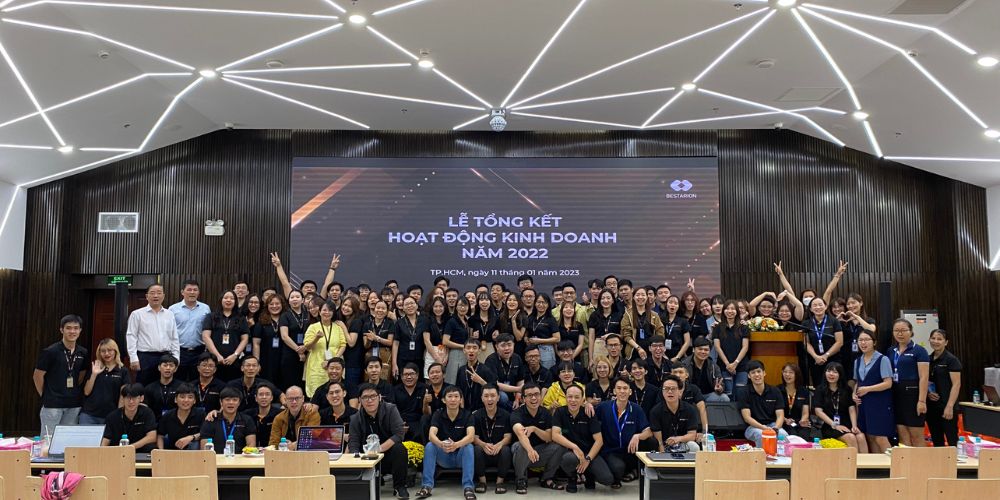The Benefits Of Outsourcing Software Development


In today’s fast-paced digital landscape, software development plays a pivotal role in the success of businesses across industries. Whether it’s creating a mobile app, a complex web application, or refining existing software, the demand for skilled software developers continues to grow. However, many companies grapple with the challenges of balancing budgets, sourcing top-notch talent, and meeting stringent project deadlines. In response to these challenges, outsourcing software development services have emerged as a strategic solution.
In recent years, the tech industry has witnessed a significant upsurge in the number of companies choosing to outsource either a portion of their business processes or their entire software development projects. This trend is driven by the numerous advantages that outsourcing offers, appealing to both small enterprises and global corporations alike. According to Statista, the revenue generated from software development outsourcing is expected to reach $460.1 billion by 2023 and is projected to grow to $777.70 billion by 2028, boasting an impressive annual growth rate of 11.07% (CAGR 2023 – 2028).
For those who may be hesitant to embrace this trend or consider it as an option, this article helps explore the compelling reasons behind the widespread adoption of offshore software development, shedding light on the multitude of benefits it offers to businesses of all sizes.
14 Key Reasons Why Companies Outsource Software Development
1. Cost Efficiency
One of the most compelling reasons to outsource software development is cost efficiency. Building an in-house development team entails substantial expenditures, including salaries, benefits, office space, and equipment. In some scenarios, offshore software development can yield an impressive reduction in overall expenses, ranging from 30% to 60%, in contrast to traditional approaches. This substantial cost reduction is a result of economizing across various facets of your software project.
On the other hand, outsourcing allows companies to access global talent at competitive rates. Outsourcing destinations like India, Ukraine, and Vietnam offer highly skilled developers at a fraction of the cost compared to hiring locally in developed countries. Take, for instance, Vietnam, which stands out as one of the most cost-effective countries for software development outsourcing services. In Vietnam, developers typically charge an average rate ranging from $20 to $50 per hour. When businesses opt for outsourcing to Vietnam, they can achieve remarkable cost reductions of up to 60% compared to the rates prevailing in the United States.
Moreover, outsourcing eliminates the need for companies to invest in the latest technology and infrastructure. The outsourcing partner bears these expenses, allowing the client company to allocate its resources more efficiently. This cost-effectiveness enables businesses to divert funds towards other critical areas such as marketing, research, and innovation.
Read more: Top 10 Software Development Companies in Viet Nam 2023
2. Access to a Global Talent Pool
The shortage of skilled software developers is a persistent challenge for companies worldwide. Outsourcing transcends geographical boundaries, providing access to a vast talent pool. Companies can handpick developers with specific expertise and experience tailored to their project requirements.
Furthermore, outsourcing partners often employ diverse teams with varied skill sets, enabling businesses to tap into a broader spectrum of technical knowledge and creativity. This diversity can result in innovative solutions that may not have been possible with an in-house team.
3. Faster Time-to-Market
In today’s competitive business landscape, speed is often the key to success. Outsourcing accelerates software development processes, allowing companies to bring their products and services to market more quickly. Experienced outsourcing partners are well-versed in industry best practices, development methodologies, and project management techniques. They can swiftly adapt to changing requirements and streamline development cycles.
Additionally, outsourcing software development allows companies to scale their development teams up or down as needed, ensuring flexibility in meeting tight deadlines or responding to shifting project demands.
4. Focus on Core Competencies
Outsourcing non-core functions like software development enables businesses to concentrate on their core competencies. This strategic focus can lead to improved efficiency and innovation in areas directly related to the company’s mission and objectives.
For example, a healthcare provider can outsource software development to ensure their medical records system functions seamlessly, allowing them to concentrate on delivering quality patient care. Similarly, an e-commerce company can outsource website development, enabling them to focus on enhancing the user experience and expanding their product offerings.
5. Risk Mitigation
Mitigating risks is a crucial aspect of business management. When companies outsource software development, they share project risks with their outsourcing partners. These partners assume responsibility for meeting project deadlines, maintaining software quality, and managing development risks.
Additionally, outsourcing provides companies with the opportunity to work with established and experienced development firms that have a proven track record. This reduces the likelihood of project failures and costly setbacks, as experienced outsourcing software development partners are well-equipped to navigate challenges and ensure project success.
Read more: 6 Biggest Problems of Outsourcing Software Development
6. Scalability
The ability to scale up or down quickly in response to changing business needs is a significant advantage of outsourcing. Whether a company is launching a new product, expanding into new markets, or simply adjusting to fluctuations in demand, outsourcing software development partners can adapt their development teams accordingly.
This scalability ensures that companies can efficiently allocate resources without the time-consuming process of hiring and onboarding new employees or downsizing an in-house team during lean periods.
7. Access to the Latest Technologies
Staying up-to-date with the latest technologies is vital in the software development landscape. Outsourcing software companies are often at the forefront of technology trends and advancements. By partnering with these firms, companies gain access to cutting-edge tools, frameworks, and development methodologies.
Furthermore, outsourcing software development partners typically invest in training and development for their teams to keep their skills current. This ensures that the software developed is not only cost-effective but also utilizes the most advanced technologies available.
8. 24/7 Development Cycle
Global outsourcing allows for a 24/7 development cycle, where work continues around the clock. While one team is wrapping up their workday, another team in a different time zone can pick up where they left off. This continuous development cycle significantly reduces project turnaround times.
This approach can be especially beneficial for businesses serving international markets or those with tight project deadlines. It ensures that progress is made every hour of the day, ultimately expediting project delivery.
9. Enhanced Focus on Quality Assurance
Quality assurance is a critical aspect of software development. Ensuring that software functions as intended and is free of defects is essential for customer satisfaction and brand reputation. Outsourcing software development partners often have dedicated quality assurance teams that rigorously test and validate software, helping to identify and rectify issues early in the development process.
Additionally, many outsourcing firms follow established quality assurance standards, such as ISO 9001 or CMMI, further ensuring the delivery of high-quality software.
10. Enhanced Security Measures
Security is a paramount concern in today’s digital age. Businesses must safeguard their intellectual property, customer data, and sensitive information. Leading outsourcing partners recognize the importance of robust security measures and invest in cybersecurity to protect their clients’ assets.
These partners often comply with international security standards and regulations, such as ISO 27001, and implement stringent data protection practices. They also stay informed about emerging cybersecurity threats and employ best practices to mitigate risks.
11. Compliance and Regulatory Expertise
Navigating complex regulatory environments can be a daunting task for companies, particularly those operating in highly regulated industries such as finance, healthcare, or pharmaceuticals. Outsourcing partners often have a deep understanding of industry-specific regulations and compliance requirements.
By partnering with experienced outsourcing firms, companies can ensure that their software solutions adhere to all relevant regulations, reducing the risk of compliance violations and associated penalties.
12. Flexibility in Engagement Models
Outsourcing offers flexibility in engagement models, allowing companies to choose the most suitable arrangement for their specific needs. Common engagement models include:
- Fixed-price contracts: Suitable for well-defined projects with clear requirements.
- Time and materials contracts: Ideal for projects with evolving or uncertain requirements.
- Dedicated development teams: Offers extended support and ongoing development for complex projects.
- Hybrid models: Combines elements of multiple engagement models to meet unique project requirements.
This flexibility ensures that companies can tailor their outsourcing arrangements to align with their project scope, budget, and timeline.
Read more: Staff Augmentation vs IT Project Outsourcing: Pros, Cons & Differences
13. Access to Industry Expertise
Outsourcing partners often have extensive experience in specific industries, such as healthcare, finance, e-commerce, or manufacturing. This industry expertise can be invaluable when developing software solutions tailored to the unique requirements and challenges of a particular sector.
Partnering with an outsourcing firm that understands the nuances of an industry can result in more effective and relevant software solutions.
14. Enhanced Project Management
Effective project management is crucial for the success of any software development project. Outsourcing software partners typically employ experienced project managers who oversee all aspects of the development process, from requirements gathering to delivery.
These project managers use proven methodologies, such as Agile or Scrum, to ensure that projects are delivered on time and within scope. They also provide regular progress reports and facilitate communication between development teams and clients.
Read more: A Quick Guide to Managing Outsourced Software Development
Conclusion
Outsourcing software development has evolved into a strategic imperative for businesses seeking to thrive in the digital age. Its myriad advantages, including cost efficiency, access to global talent, faster time-to-market, and risk mitigation, make it a compelling choice for companies of all sizes and industries. Moreover, outsourcing offers flexibility, scalability, and access to the latest technologies, enabling businesses to remain competitive and innovative.
As the global software development outsourcing market continues to grow and adapt, companies must carefully evaluate their outsourcing options and choose partners that align with their specific needs and objectives. By embracing outsourcing as a strategic tool, businesses can harness the full potential of software development to drive growth, innovation, and success in the dynamic and ever-evolving technology landscape.
Read more: Top 6 Tips To Succeed in Outsourcing Software Development
Whatever Your Reason for Outsourcing Software, BESTARION Can Help.
Bestarion is a subsidiary company of Larion – a leading outsourcing company in Vietnam with 20 years of experience bringing innovative ITO & BPO Solutions to clients worldwide. Bestarion consistently applied the most advanced technologies to build and deliver scalable, high-performance software development solutions to meet their customers’ business challenges in committed time and quality assurance.
With more than 150+ well-trained and experienced staff, they have delivered 215+ projects for global clients. They also have expertise in many industries, including Healthcare, Fintech, E-Commerce, Supply Chain, Banking, Education… It’s great that 95% of the customers they served are satisfied with their service.
When you cooperate with Bestarion outsourcing software development company, you’ll benefit from our 20+ years of experience in software outsourcing. Our engineers are located in the heart of Vietnam’s IT sector, in Ho Chi Minh City. As evidenced by their strong client retention record, our talented and experienced teams are capable of working on any software development project you may require. Please take a look around the site to learn more about our services and technology solutions.



